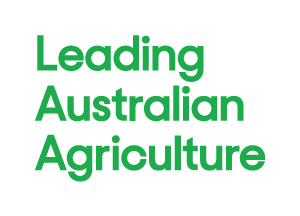WITH the April Westpac-NFF Commodity Index recording global commodity prices 25% above this time last year, and Australian farmers gearing up for a bumper winter season, new fears have surfaced about a lack of labour to meet the expected surge in production.
“Grain and cotton markets continued their climb as governments around the world attempt to curb food inflation by restricting exports and channel their supplies back to domestic consumers,” Westpac Regional and Agribusiness Banking Chief Executive Graham Jennings said.
“Here in Australia, producers are eager to capitalise on strong global prices, with many optimistic that this will be a season of revival. Of course, favourable seasonal conditions are needed to make this a reality – in addition to good winter rain, farmers need a sufficient workforce to be able to maximise their output.
“With unemployment still at near 33-year lows, labour shortages pose a serious threat to agricultural sectors, limiting their ability to get produce to the world market.”
National Farmers’ Federation (NFF) Vice-President Charles Burke noted that Australian farmers, upon returning to post-drought production, will need an extra 100,000* employees – the vast majority highly-skilled and some 22,000** entry-level employees for horticulture alone.
“There is a danger that, should the sector fail to attract the necessary labour, farmers will be limited in their ability to harvest. Further, throughout the supply chain, employees will be needed to fill positions in transport, processing, packaging and so on… we don’t know where those extra employees are going to come from.
“Preliminary estimates suggest the cost to the national economy will be substantial, upwards of $1.5 billion in agricultural GDP alone. Such estimates continue to swell as world prices of agricultural commodities are tipped to climb higher and previously hidden costs of agricultural labour market volatility will increasingly impact on production efficiency.
“Domestic and international consumers are often unaware that labour shortages in key agricultural occupations – such as farm managers, station hands, harvesters and fruit and vegetable pickers – have a significant impact on the prices paid at the retail check-out. That realisation is coming.”
Compared with February 2008 levels, global prices in March increased for Barley (5.1%), Wheat (4.2%), and Cotton (8.7%). Canola (-2.0%), Sugar (-3.0%), Beef (-5.1%), Wool (-3.1%), and Dairy (-3.3%) all experienced decreases from previous month levels.
The overall weighted index decreased by 0.7% during March, taking it to 25.3% above year-ago levels.
[ENDS]
Sources: * http://www.nff.org.au/read/2450121502.html[Summary of Labour Shortages in the Agricultural Sector], NFF, March 2008. ** http://www.nff.org.au/read/2450268121.html[Workforce from Abroad Employment Scheme], NFF, April 2008.
The Westpac-NFF Commodity Index is weighted according to the value of Australian agricultural exports and includes only rural commodities – unlike other price indices that are overshadowed by oil, mineral and energy prices. It provides daily movements based on prices of Australia’s eight key farm exports – wheat, barley, beef, wool, cotton, sugar, dairy and canola – in both $US and $A.
You may also like
Fair Work Ombudsman goes MIA on ag businesses’ futures
The National Farmers’ Federation (NFF) is disappointed by the Fair Work Ombudsman’s (FWO) recent review into the definition of a “small business employer”, under the Fair Work Act. The review failed to deliver any...
New grants to help bush connectivity
The Regional Tech Hub has announced a new grants program, offering up to $3000 to community groups across rural, regional and remote Australia. The Connect Grants are open to grassroots projects that help people...
It was our biggest farmer rally; yet 40 years on we’re in the same battle
Opinion by David Jochinke, National Farmers’ Federation President Forty years ago today (July 1), 45,000 farmers packed their station wagons, fixed a few cheese sandwiches and sarsaparillas for the road, and...





Add comment